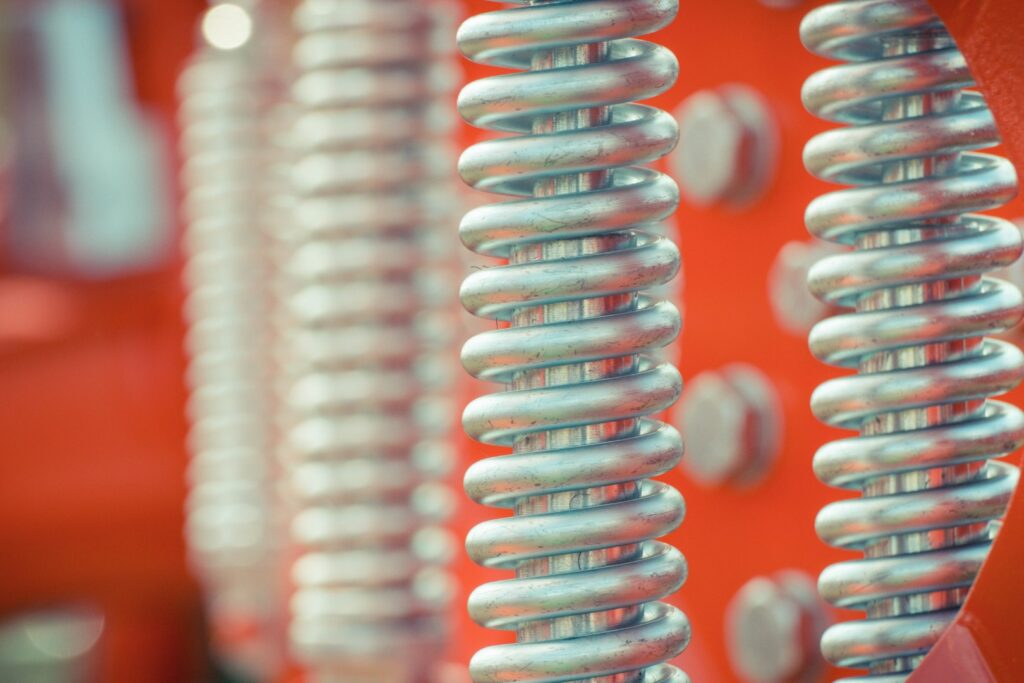Why the Lifespan of Garage Door Springs Matters
Your garage door springs carry a heavy burden. They counterbalance the door’s weight so your opener or your arm doesn’t have to struggle. Apex Garage Door & Repair notes that torsion or extension springs perform hundreds of pounds of work, yet they have a limited life expectancy.
Because springs work under extreme tension, wear over time, and can fail suddenly, it’s important to understand the lifespan of garage door springs and when replacing them is necessary rather than optional.
Measuring the Lifespan of Garage Door Springs by Cycles, Not Years
One common misconception is that springs last a fixed number of years. In truth, the more accurate metric for the lifespan of garage door springs is cycles—one cycle is one full open and close of the door.
- Standard springs in many residential systems are rated for about 10,000 cycles.
- In ideal circumstances—low usage, good maintenance—those 10,000 cycles could last 10–15 years.
- But if your garage sees heavy traffic (multiple uses per day), the lifespan may shrink to 5–7 years or less.
- For very frequent use (such as several openings per day), springs might fail in as few as 3–4 years.
Some high-cycle springs are rated for 20,000, 30,000, or more cycles. If you expect heavy use, upgrading to a higher-cycle spring is often a smart investment.
Also note: environment, installation, and maintenance heavily affect actual life. A spring rated for 10,000 cycles might fail earlier under less-than-ideal conditions.
Factors That Shorten Spring Life
Understanding what accelerates wear can help you take preventive action. Here are the biggest culprits:
Poor or Infrequent Maintenance
Lack of lubrication, missed inspections, or ignoring minor issues let friction, rust, and uneven loading damage springs. Routine lubrication and inspection are key.
Corrosion and Environment
In humid or dusty settings, springs may rust or corrode, reducing strength. Phoenix and the Valley have dust, heat, and occasional moisture that can exacerbate wear.
A Door Out of Balance or Misalignment
If your door is misaligned, binding, or off its tracks, the springs must compensate—leading to uneven stress and premature failure.
Improper Installation or Mismatched Springs
If a spring is under- or over-sized, or installed incorrectly, it won’t handle loads properly. That leads to fatigue. Apex emphasizes that springs perform most of the work under hundreds of pounds of torsion.
Added Weight
If you upgrade the door panels, add insulation, or apply thick coats of paint, your door gets heavier. That added mass makes the springs work harder and shortens life.
Signs It’s Time to Replace Your Springs
You don’t have to wait for a loud snap to know something’s wrong. Here are warning signs:
- The door moves more slowly or stalls
- You hear squeaking or grinding noises
- The door feels heavier to lift manually
- The door is crooked or out of balance
- Visible gaps in spring coils or rust
- One spring has broken (replacement typically done in pairs)
If you see these or your springs are aging toward their cycle limit, call a professional rather than pushing your luck.
Why Replacement Is Better Than Patching
When one spring breaks, the other is likely not far behind. Replacing both springs at once restores balance, ensures equal wear, and is more cost-effective in the long run.
Also, trying to patch or temporarily adjust a worn spring is risky. These parts are under high tension; a misstep in DIY can cause serious injury. Apex strongly advises that broken springs be handled only by qualified technicians.
Choosing a High-Quality Spring and Better Options
To maximize performance and extend the lifespan of garage door springs, consider the following:
- Select high-cycle springs (20,000 cycles or more)
- Use corrosion-resistant or coated springs in dusty or humid zones
- Make sure they are properly sized and matched for your door
- Always pair springs (replace both sides)
- Stick with reputable parts and professional installation
Upgrading may cost more upfront, but the longer life and reduced repair risk make it worth it.
Maintenance Tips to Extend Spring Lifespan
Preventive care helps a lot. Try this schedule:
- Biannual lubrication (springs, bearings, hinges)
- Annual inspection by a trained technician
- Check balance (disconnect opener and raise halfway — the door should stay put)
- Tighten hardware (bolts, screws)
- Keep the tracks clean and aligned
- Avoid overworking the system (don’t slam the door or force it)
Regular maintenance can often push a spring closer to its full lifecycle rather than having it fail early.
What to Expect During Replacement
When you call Apex Garage Door & Repair:
- Our technician assesses the current springs, door balance, and hardware
- We choose the correct springs (type, cycle rating, coating)
- We replace in pairs
- We re-tension, test, and perform a safety check
- The process is often completed in under an hour for one door
Doing it properly ensures your door behaves safely, smoothly, and reliably for years.
Timing Your Replacement and Avoiding Surprises
If your springs are more than 7–10 years old or have seen heavy use, it’s wise to plan for replacement before a failure occurs. Sudden snapping can damage the door, cables, tracks, or opener, and puts your safety at risk.
Monitoring your usage, keeping good records, and scheduling regular inspections will allow you to make the switch during favorable conditions—not in an emergency.
Keep Your Door Healthy — Contact Apex Today
If you detect early warning signs or your springs are getting old, don’t wait. Call Apex Garage Door & Repair for an inspection and recommendation. Our technicians are available seven days a week for spring repair or replacement across Phoenix, Mesa, Scottsdale, and surrounding areas.
Let us help you protect your investment, stay safe, and avoid the inconvenience of a sudden failure.
Contact us today to schedule a spring inspection or replacement — and keep your garage door running smoothly and reliably for years to come.

